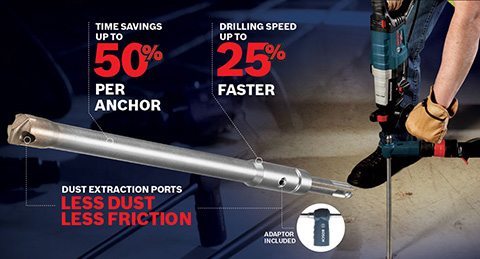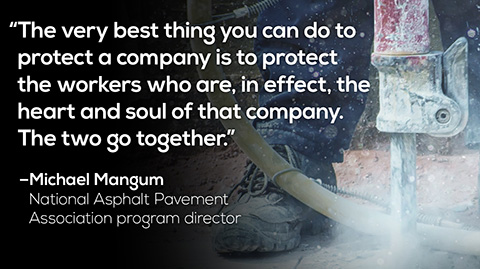**** OSHA UPDATE 4/7/2017 – New OSHA Deadline is September 23, 2017 for Silica Dust Compliance as there was a 90 day extension added.
Crystalline silica dust is nasty business and can be incredibly harmful for employees who regularly breathe in the dust during their work day. Protecting workers from these hazards should be fundamental and these new OSHA rules should not come as much of a surprise. Most commonly silica dust is created from drilling, breaking cutting, tuck-pointing or grinding materials such as concrete, brick, rock and stone. June 23, 2017 is the deadline for construction (technically in effect June 23, 2016 but finable in 2017), other industries will be following in 2018 such as industrial, fracturing and maritime, this may seem like a lot of time but it’ll be here before you know it. We will try to give you a general idea what is coming, contact OSHA with any questions.
The regulation requires reduced exposure for employees to PEL (permissible exposure level) for respirable crystalline silica to 50 micrograms per cubic meter of air over an 8 hour shift. Just for reference a microgram, is .000001 gram. So we are only talking about .00005 grams in an area roughly 3’x3’x4’ which is not much at all. Basically if LeBron James did his #chalktoss on a jobsite (with silica dust) he could get an OSHA fine.
In addition to this very very low level on airborne particulates employers will also be required to use engineering controls such as water or local ventilation at point of contact. As well as provide respirators and other PPE for all employees near work, develop a written exposure control plan, offer medical exams for highly exposed workers and train all workers on silica risks and limiting exposure. This will change the way many tasks on job sites need to be competed, if these practices haven’t been adopted already.
Drilling holes in concrete with engineering controls will come as VDCS (vacuum dust collection systems) which could be bits with vacuum features built-in like Bosch SpeedClean or Vacuum Core Bits, or by using a vacuum attachment that goes on the work surface like HDC200 or HDC250 (best on smooth surfaces) or use a tool with an dust collection attachment built in like the Milwaukee 2712-22DE or 2715-22DE. HEPA filtration is always recommended with vacuum systems. For wet drilling with diamond core bits the technique is pretty much the same as ever, water does a great job of keeping the silica out of the air, unfortunately now you’ve got slurry everywhere which can cause plenty of its own problems.
Grinding Concrete with Engineering Controls has many tools that have been in the market for years that should meet these requirements. The vacuum requirement for grinding is 25 CFM per 1” grinding diameter, so 5” wheel would require 125 CFM. Simply attach a Bosch CSG15 ($399) to any of the Bosch HEPA Vacs (all rate at 150 CFM) and you’ve got a great system that shroud completely encloses grinding surface, can auto clean the filter, turns on and off at tool and really built to meet these types of silica guidelines years ahead of the requirements.
Cutting Concrete with engineering controls can be a little trickier. Using a Cut-Off Saw or Walk Behind Saw to cut concrete seems like the use of water to keep silica dust to less than .00005 grams per cubic meter would be the most economical option. The same 25 CFM vacuum requirement per 1” diameter is required for cutting so for a 14” so you’d need a 350 CFM vacuum to meet minimums, a very large vac system like the DustDroid300 ($6595) only has 300 CFM. When using smaller diamond wheels on a grinder or tuck point tool there are some dust collection shrouds that do work well with a HEPA vacuum system. We anticipate more tools will start hitting the market within the next year where the collection shrouds are built-in similar to what Metabo has done with several of their tools.
Since training is required within the next year for anyone working around silica dust chances are good you’ll hear more about this topic than you’d ever thought before the June 23rd deadline. For planned tool purchases within the next year we would strongly encourage you to make sure you’re buying something that’ll meet the new OSHA requirements. Certain types of concrete tools that don’t meet the requirements might go on sale with deep discounts, just be aware.
If you have any questions about concrete tools and accessories that follow recommended control methods for dust collection give the pros at Ohio Power Tool 800-242-4424 a call and they will be happy to help you find the right tool for the job. Again if you have any questions about OSHA rules and regulations please contact OSHA directly www.OSHA.gov/silica. We would recommend talking with an OSHA professional to make sure you meet all the training and preparedness requirements before the June 23, 2017 deadline.





